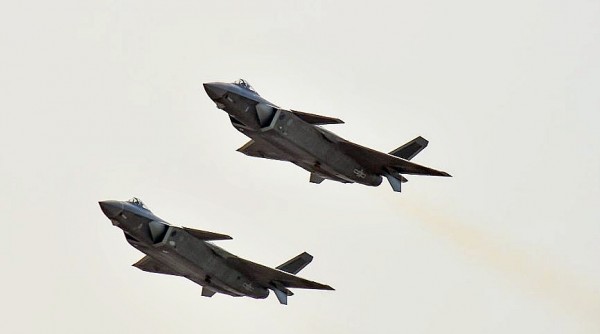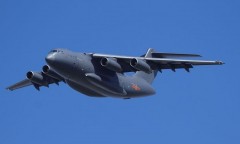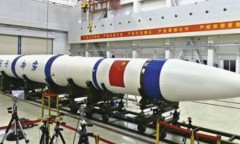By Arthur Dominic J. Villasanta , | April 08, 2017

Two J-20s.
China's Chengdu J-20 low observable fighter is useless as an air superiority fighter and will earn its keep as a long-distance heavy fighter attacking unarmed U.S. Air Force aerial tankers and airborne early warning and control (AEW&C) aircraft.
Its many non-stealthy features such as its use of canards, its large size and seriously underpowered and unreliable engines means the J-20 will be unsuitable as a front line air superiority fighter flying against Lockheed Martin F-35 Joint Strike Fighters flown by the U.S. Navy and U.S. Marine Corps.
Like Us on Facebook
Despite its drawbacks as an air-to-air fighter, the J-20 does have its uses. The J-20 will give China "a variety of previously unavailable air combat options and enhance its capability to project power, claims the American think tank Center for Strategic and International Studies (CSIS) based in Washington D.C.
CSIS also expects the fighter to become operational with the People's Liberation Army Air Force (PLAAF) by 2018, which is on the optimistic side of the scale.
CSIS mistakenly describes the J-20 as a "full" fifth-generation fighter. This means the J-20 includes stealth technology, supersonic cruising speed, and highly integrated avionics. The first characteristic (stealth technology) isn't supported by available evidence, however.
More accurately, the J-20 features only "forward stealth," meaning the J-20 is only truly stealthy when seen by radar head-on. From the side, the rear and because of its larger size, the J-20 has a huge radar cross section (RCS) that's not that of a stealth aircraft.
In contract, the RCS of the F-35 has been described as that of a small steel marble.
Some analysts feel the J-20 is more accurately described as a "low observable" (LO) aircraft instead of a true stealth aircraft because of its many design deficits. These include its forward stealth design and its use of canards that sacrifice stealth.
The J-20, which made its first flight only in 2011, was never intended as an air superiority fighter that will allow it to prevail against its two premier antagonists: the F-35 and the Lockheed Martin F-22 Raptor.
Its unreliable engines also preclude the J-20 from taking on either of the American stealth fighters on anything approaching equal terms. The J-20 prototypes are underpowered because their twin Saturn AL-31F engines produce about 30,000 lbs of thrust each compared to the 35,000 lbs delivered by the F-35's engines.
-
Use of Coronavirus Pandemic Drones Raises Privacy Concerns: Drones Spread Fear, Local Officials Say

-
Coronavirus Hampers The Delivery Of Lockheed Martin F-35 Stealth Fighters For 2020

-
Instagram Speeds Up Plans to Add Account Memorialization Feature Due to COVID-19 Deaths

-
NASA: Perseverance Plans to Bring 'Mars Rock' to Earth in 2031

-
600 Dead And 3,000 In The Hospital as Iranians Believed Drinking High-Concentrations of Alcohol Can Cure The Coronavirus

-
600 Dead And 3,000 In The Hospital as Iranians Believed Drinking High-Concentrations of Alcohol Can Cure The Coronavirus

-
COVID-19: Doctors, Nurses Use Virtual Reality to Learn New Skills in Treating Coronavirus Patients










